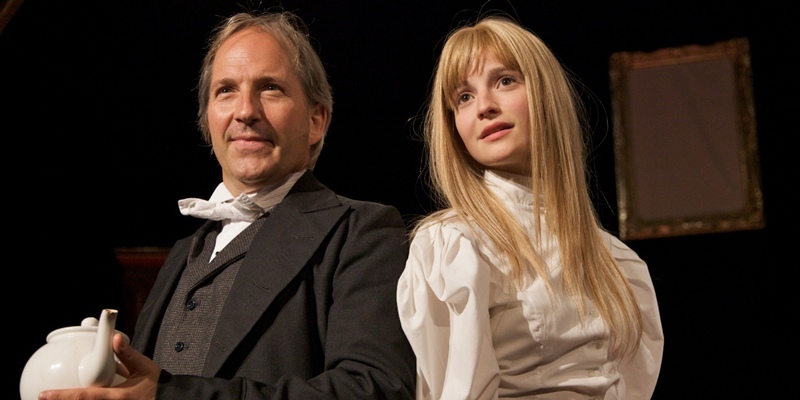Charles Dodgson, known to the world as Lewis Carroll, the creator of Alice In Wonderland, was 55 years old when he struck up a friendship with Isa Bowman, the child actress who played Alice in the stage version of the book that made its author famous and wealthy.
Over the next eight years she would become an important part of Carroll’s life, and her memoir is a rich source on the magical influence Carroll had upon young girls.
Wonderland is an imagining of how one of the final encounters between the two may have played out.
Produced by Gyles Brandreth, the musical play stars veteran stage and screen actor Michael Maloney as the Victorian author and Flora Spencer-Longhurst as Bowman.
Aside from a brief prologue and an epilogue which shows their very last meeting a year before Carroll died and when Isa announced her impending marriage the action takes place over the course of a single afternoon during the pair’s holiday in Eastbourne.
The two act out scenes from Alice In Wonderland, with Isa playing Alice and Carroll playing with relish the weird and wonderful characters she discovers down the rabbit hole.
Although Brandreth has strived to keep the piece historically accurate, he has allowed his imagination to paint in the details. One particularly charming scene is when Carroll tries to teach Isa to play his word logic game, Doublets: “Turn sleep into dream. Sleep, bleep, bleed, breed, bread, dread, dream.”
Both Maloney and Spencer-Longhurst are accomplished singers and the play is punctuated by a total of 16 songs.
Much has been made of Carroll’s apparent obsession with young girls, although in recent years scholars have sprung to his defence, arguing that child nudes were seen as a symbol of innocence in Victorian times, making it wrong to judge him through 21st-century eyes.
Wonderland leaves such judgments to the audience’s imagination. While there is obvious affection between the two protagonists (and bear in mind that it’s the late teenage version of Isa we’re getting) there are no overtly sexual overtones, yet both actors’ performances are just inscrutable enough to leave you wondering.
With the recent success of the Sherlock Holmes mini-series, it seems there is an emerging fascination for all things Victorian. Wonderland taps into that nicely, and deserves to be a success.
Wonderland is on at Assembly @ George Street at 1.45pm until August 29 (not August 17).
